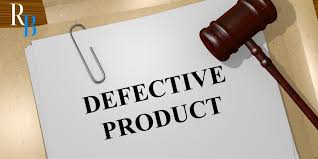Key Takeaways
- Understand the basics of what class action lawsuits entail.
- Explore the benefits and potential drawbacks of participating.
- Learn about the legal process involved and your role as a class member.
- Examine the types of cases that often become class actions.
- Assess the role of settlements and how they are distributed.
Understanding Class Action Lawsuits
Class action lawsuits provide a powerful mechanism for individuals who have suffered harm due to the actions or negligence of large corporations or entities. This legal approach consolidates individual lawsuits into a single collective action, representing the interests of a larger group known as the class. By opting into class actions to join, affected individuals gain a platform to challenge corporate behavior that has impacted the masses, allowing for a uniform remedy and potentially significant restitution. The unified effort inherent in class actions strengthens the plaintiffs’ bargaining position. It streamlines judicial resources, effectively bringing critical issues to the forefront of the legal arena where they can be addressed on a larger scale.
Benefits of Joining a Class Action
The advantages of participating in a class action lawsuit extend beyond individual compensation and tap into broader societal benefits. One of the most significant benefits is the shared legal representation, allowing plaintiffs to access legal expertise that might otherwise be financially inaccessible. By distributing the legal expenses across a large group, participants alleviate the financial burden of litigation. Furthermore, class actions can spotlight corporate malfeasance, generating public awareness and prompting regulatory scrutiny. This collective action can compel corporations to reform their practices, promoting ethical standards within industries. Thus, joining a class action is not merely about restitution but also about fostering corporate accountability and driving systemic change across the market landscape.
Legal Process and Role of Class Members
The legal journey of a class action lawsuit is structured and comprehensive. It typically begins with determining whether the court can classify a lawsuit as a class action. Once a case is certified, potential class members are notified about how they can opt into or out of the proceedings. For those opting in, their primary role is to remain informed and await updates as the appointed class representatives and attorneys handle the litigation efforts. Class members must remain engaged and understand the proceedings to ensure their rights and interests are adequately represented.
Common Types of Class Action Cases
Class action cases span a variety of legal issues, typically involving practices that have affected a large group of individuals. Consumer protection cases frequently result in class actions, especially when addressing issues such as defective products, misleading advertising claims, or data breaches that compromise consumer information. Employment-related actions are also prevalent, focusing on systemic issues like wage theft, workplace discrimination, or violation of labor laws. Securities fraud cases involve misleading financial disclosures that negatively impact investors. These cases highlight how class actions can efficiently address widespread grievances, bringing justice and potentially significant compensation to individuals who have suffered similar harm under analogous circumstances.
The Settlement Process
The settlement process in a class action lawsuit culminates in negotiation and compromise, often occurring before a case reaches trial. Settlements are strategically negotiated to provide respite to both parties: plaintiffs receive compensation without enduring a lengthy trial process, while defendants mitigate further legal costs and potential reputational damage. The settlement distribution is meticulously planned, often requiring court approval to ensure fairness. Factors such as the gravity of harm experienced, the number of class members, and the total settlement amount play pivotal roles in allocating compensation. A well-structured settlement can benefit all parties involved; however, understanding how these settlements work and their distribution is crucial for maximizing individual benefit.
Making an Informed Decision
Before deciding to join a class action, potential participants should thoroughly evaluate the lawsuit’s merits, their damages, and whether the goals of the class action align with their objectives and values. Consulting with a legal professional can provide invaluable guidance, helping individuals navigate the complexities of class actions and assess whether this collective approach aligns with their personal goals. Staying informed and engaged during the lawsuit ensures that participants make knowledgeable decisions at critical junctures, which can impact both their outcomes and the overall success of the case. Empowering oneself with knowledge and understanding of one’s legal rights amplifies individual and collective voices in pursuit of justice.
Conclusion: Empowering Collective Justice
Class action lawsuits represent more than just an opportunity for personal restitution; they are a powerful form of collective justice. Allowing individuals to band together against large entities ensures that significant grievances are addressed and entities accountable for widespread harm are brought to justice. Understanding the nuances of class actions, from their benefits and downsides to their mechanisms and potential outcomes, empowers individuals to make informed decisions. Participants contribute to their interests and the more significant cause of societal justice and corporate accountability. This collective power fosters an environment of fairness and ethical conduct, ultimately aiding the progression toward a more just and equitable society.
Stay in touch to get more news & updates on Vents Breaking!

